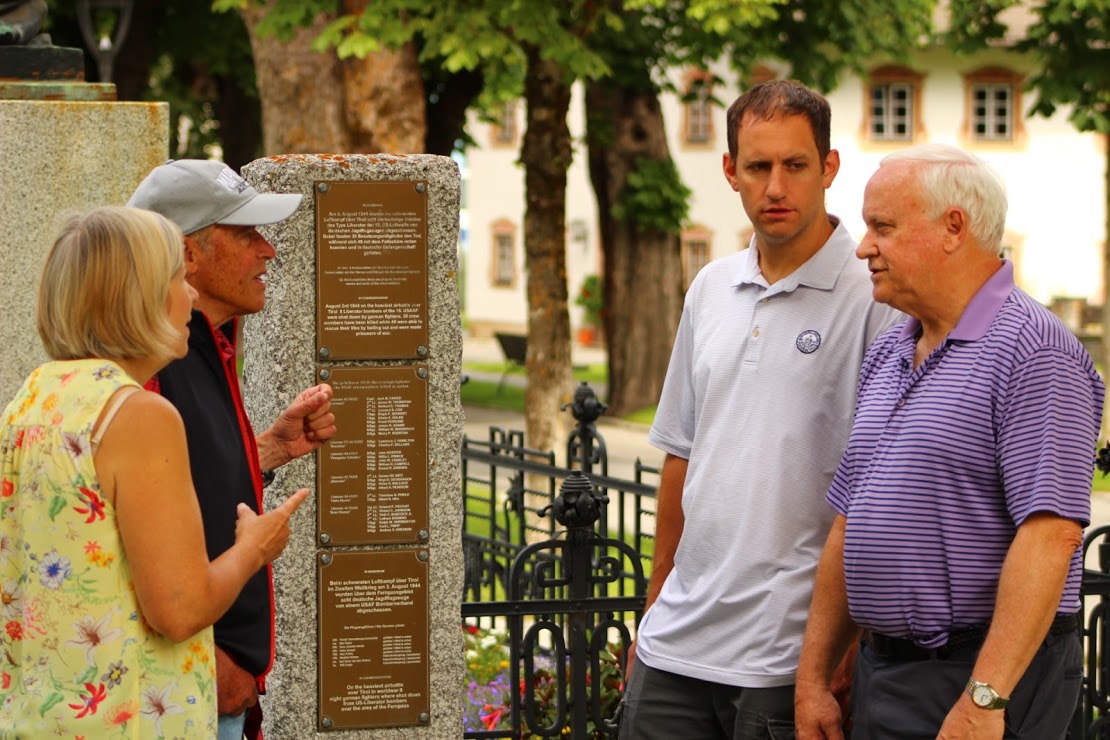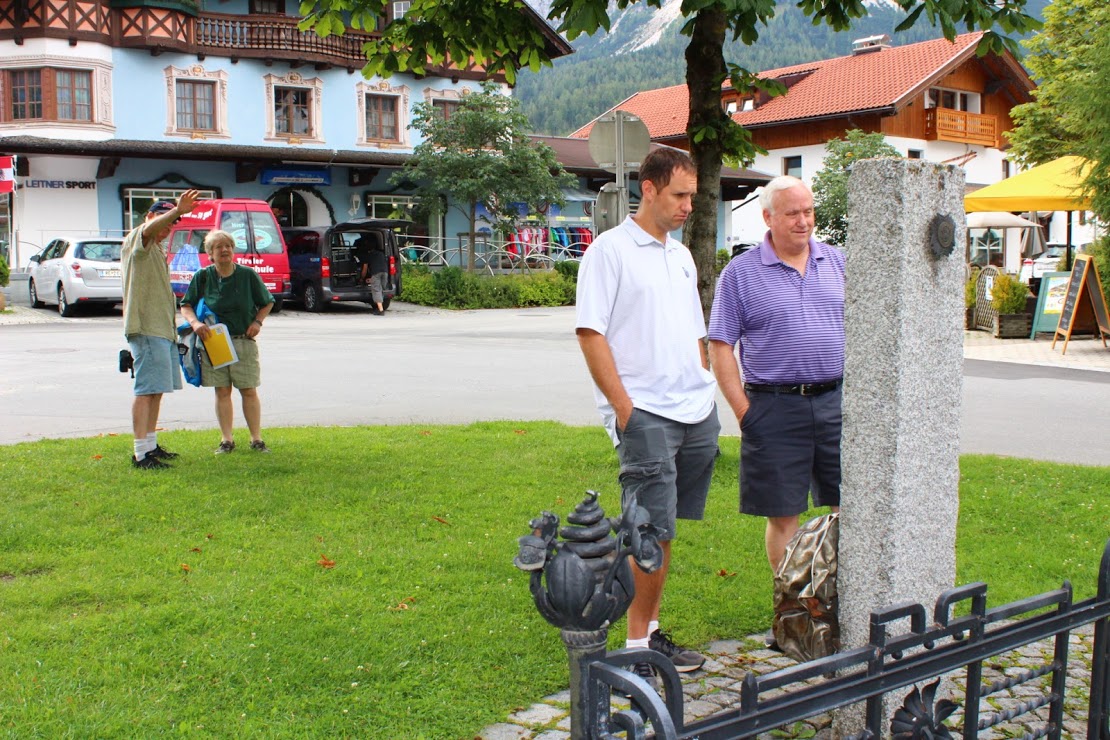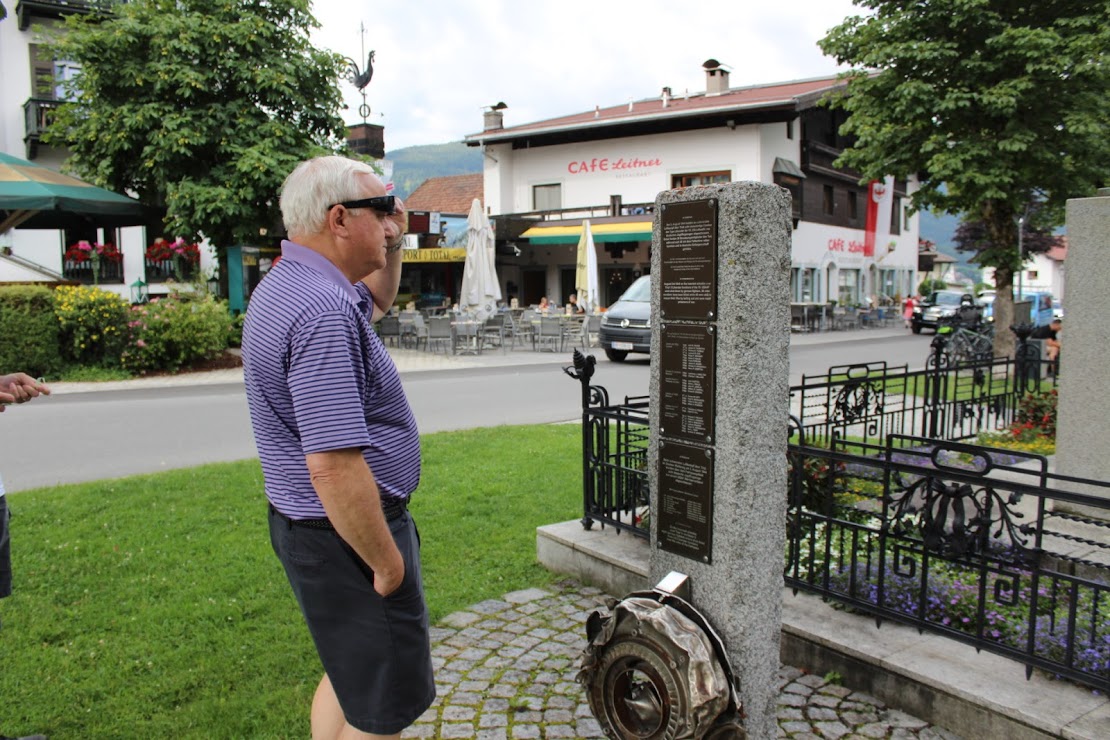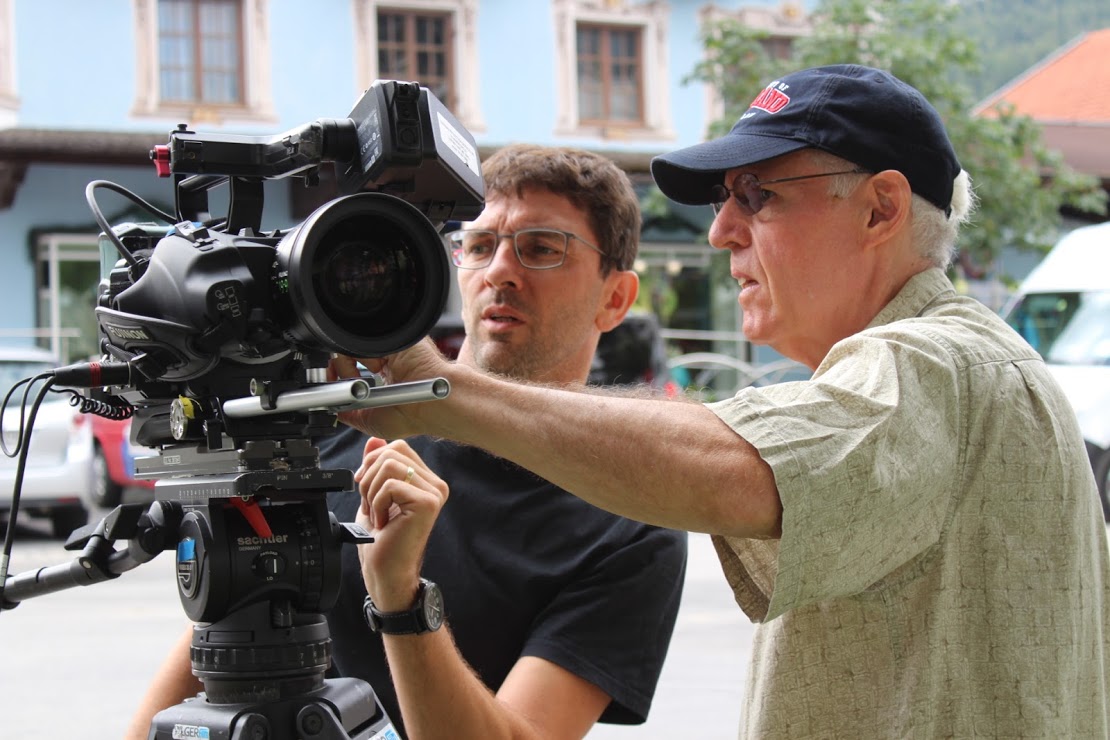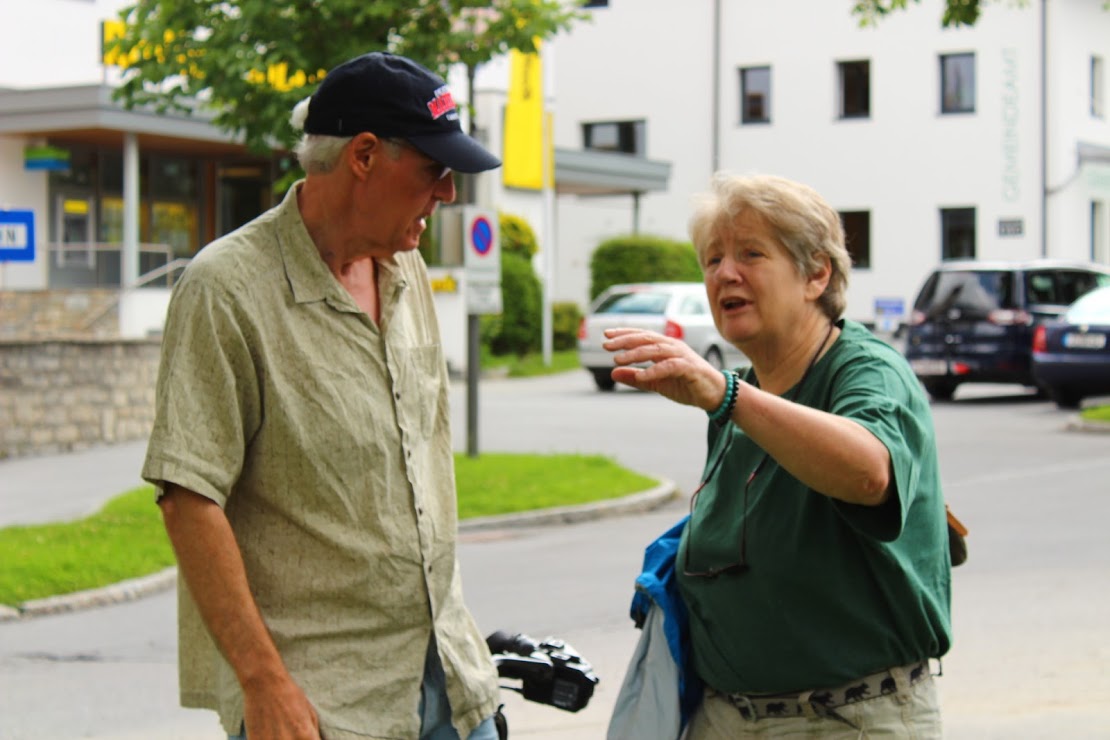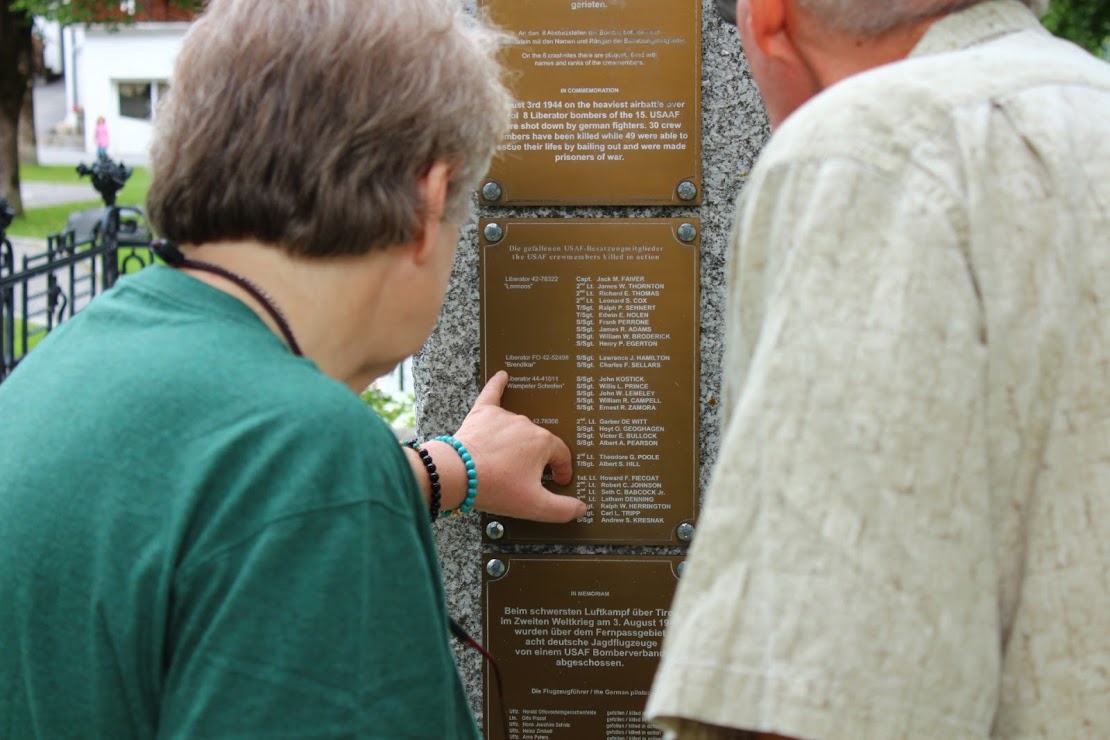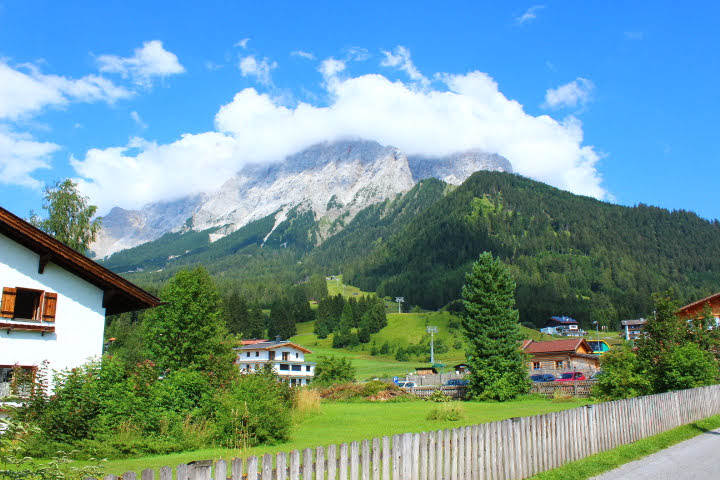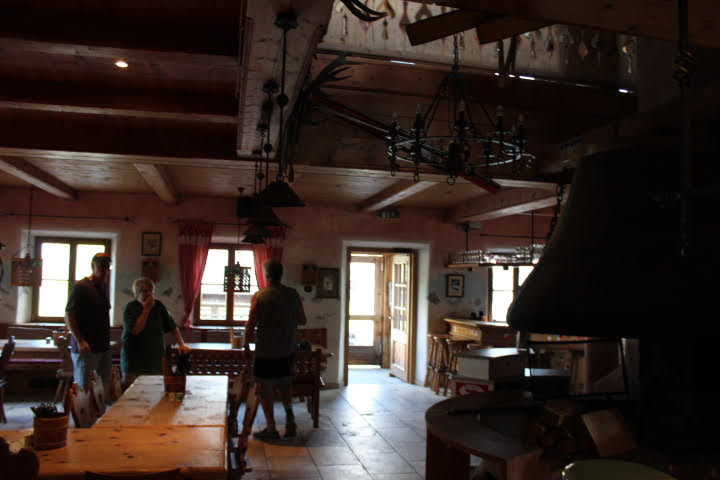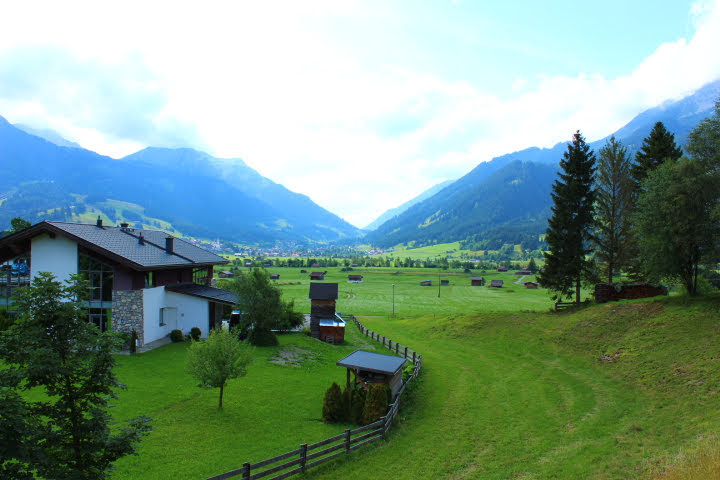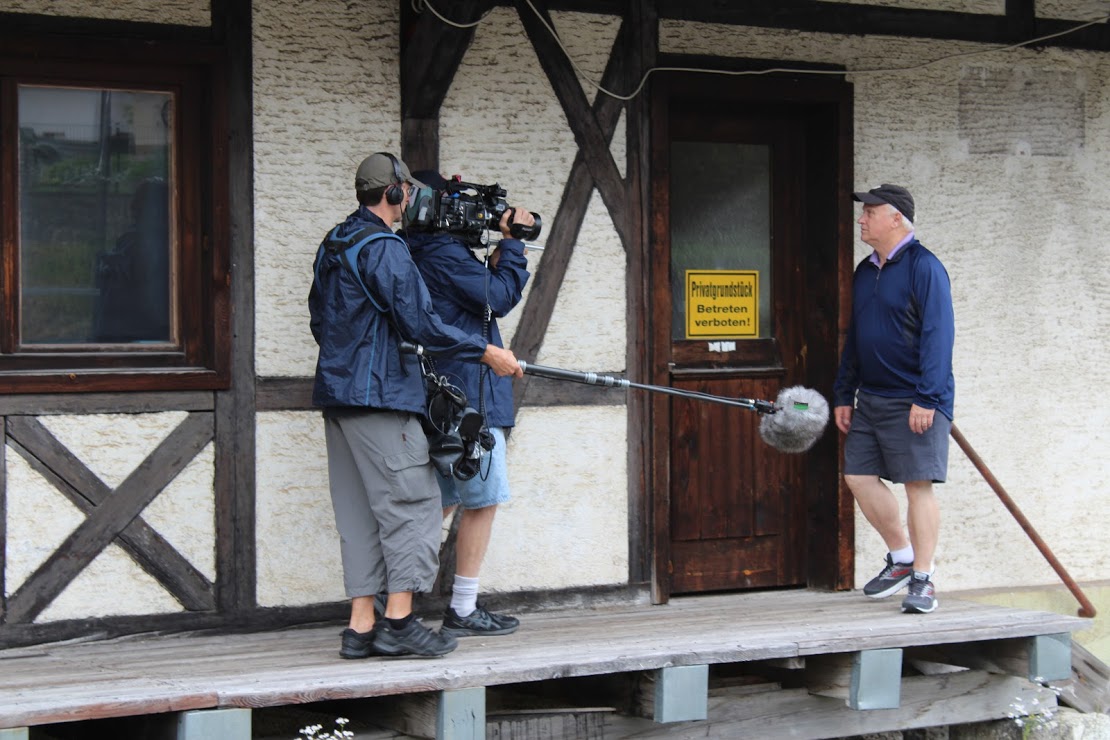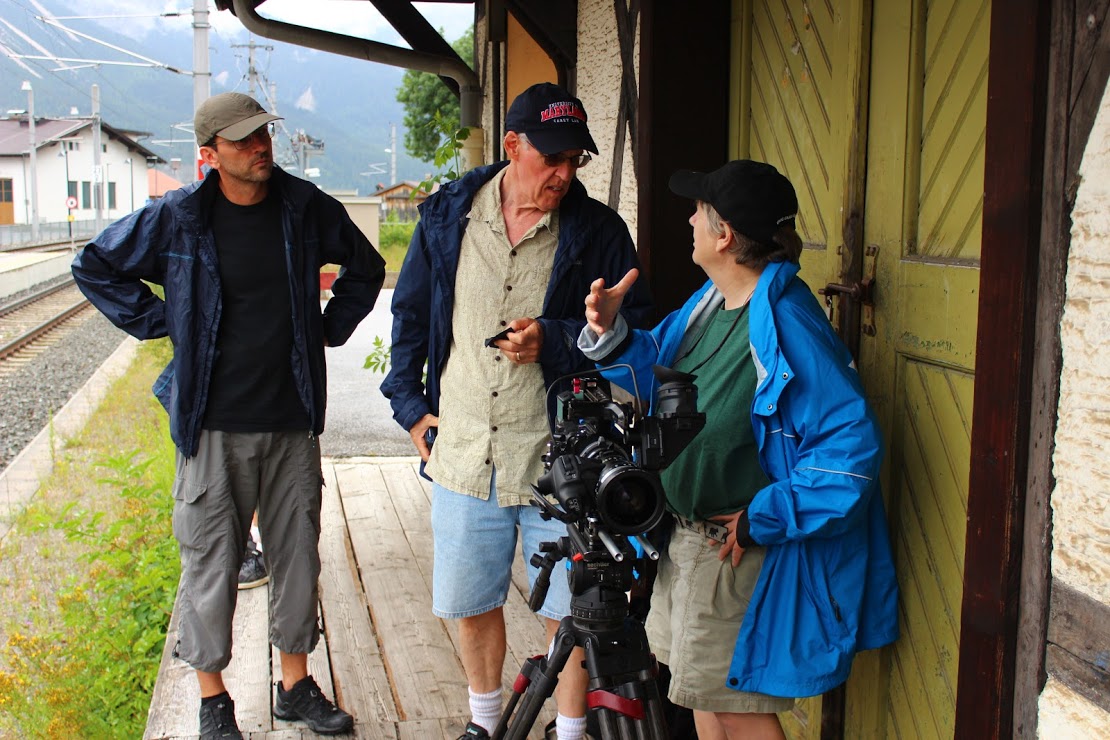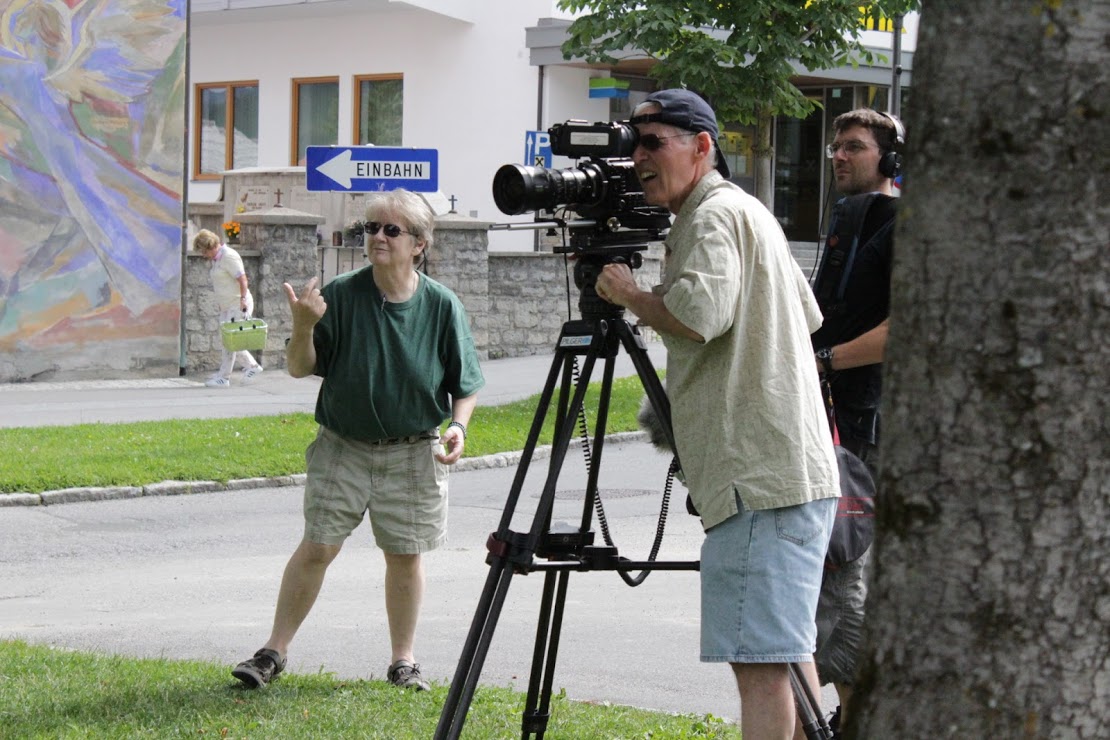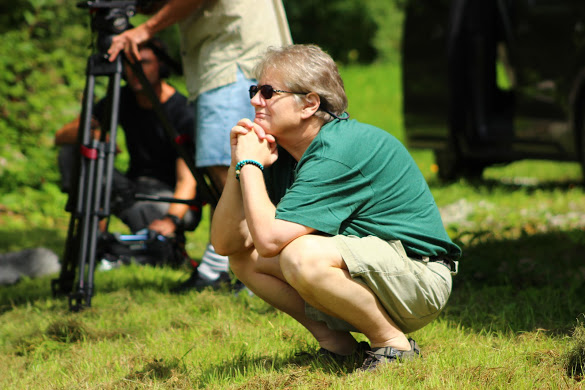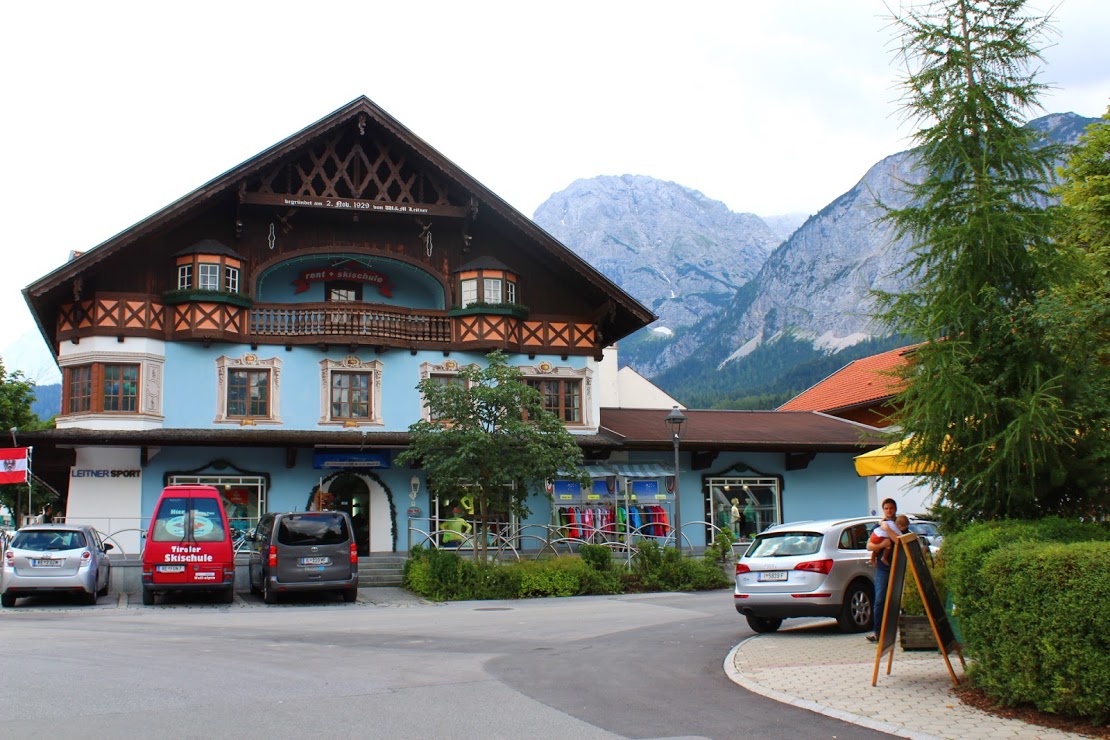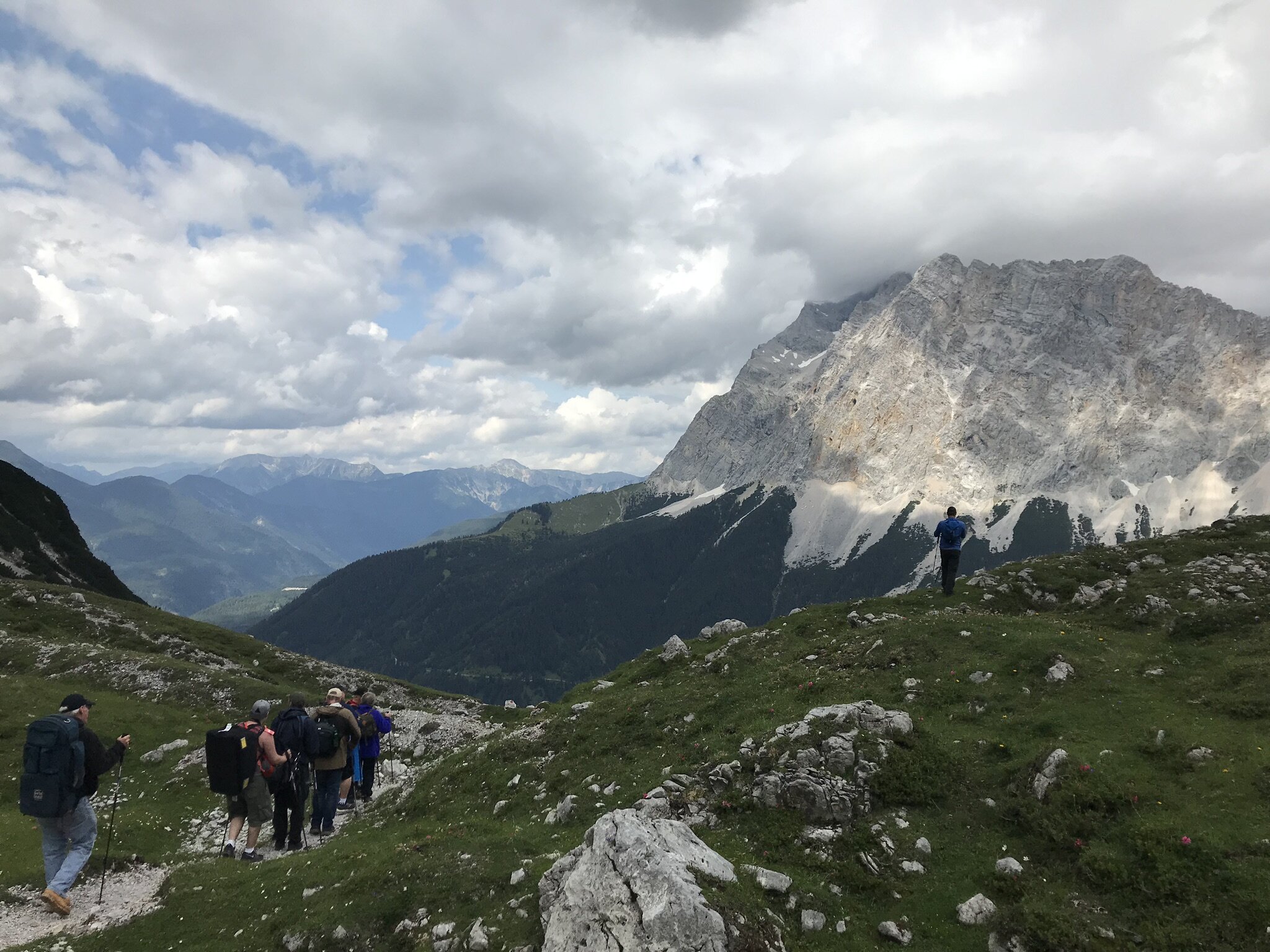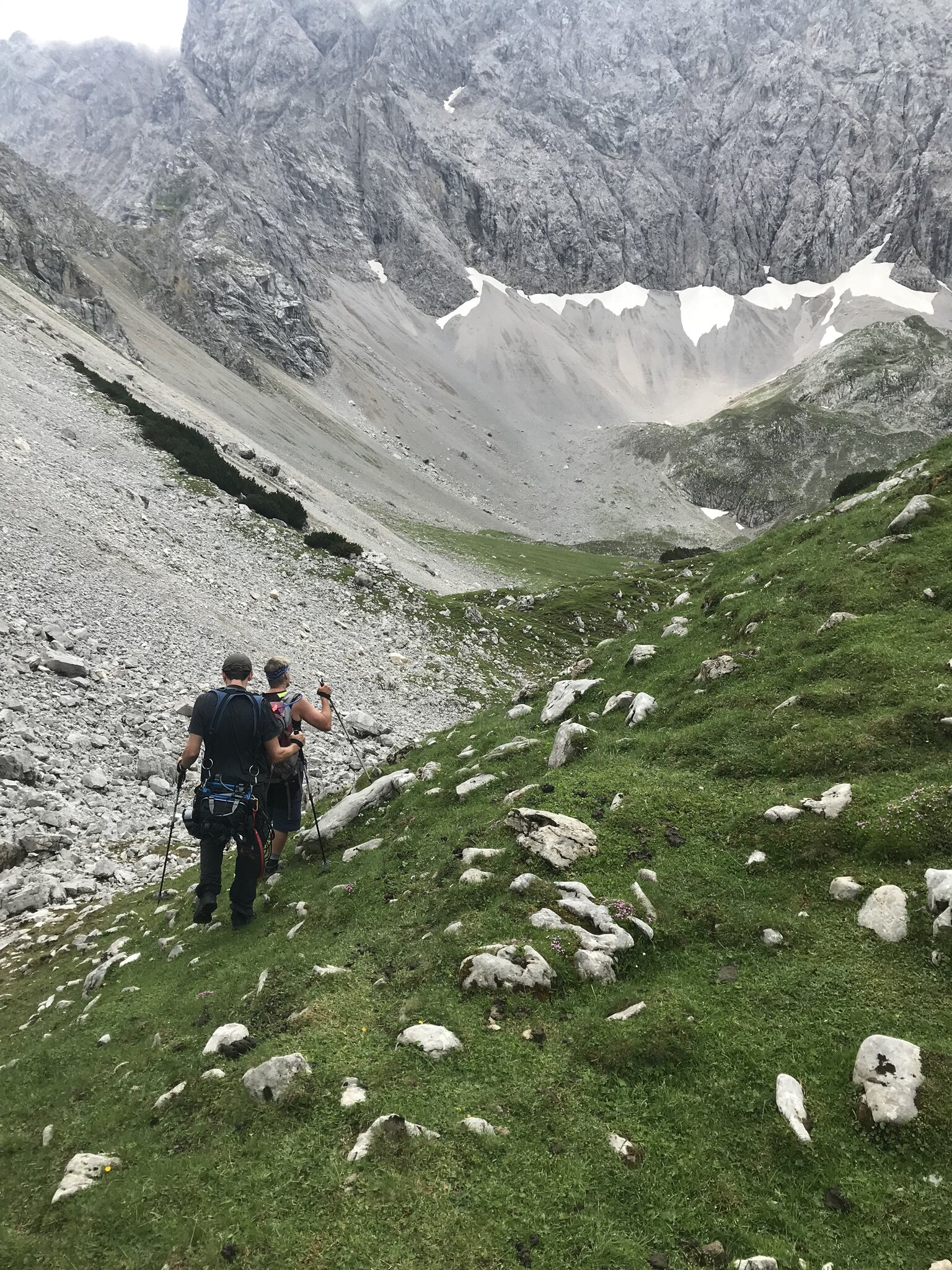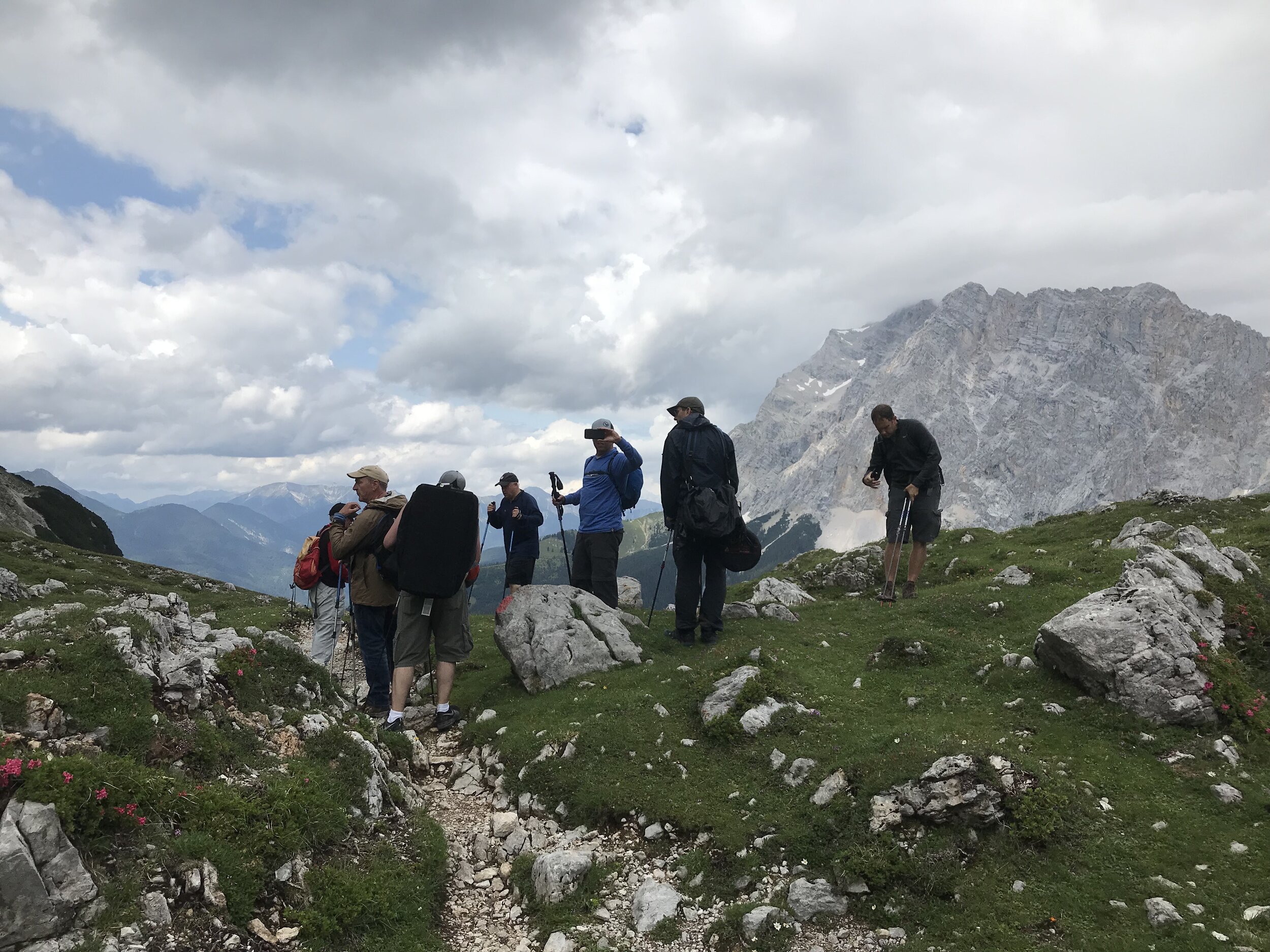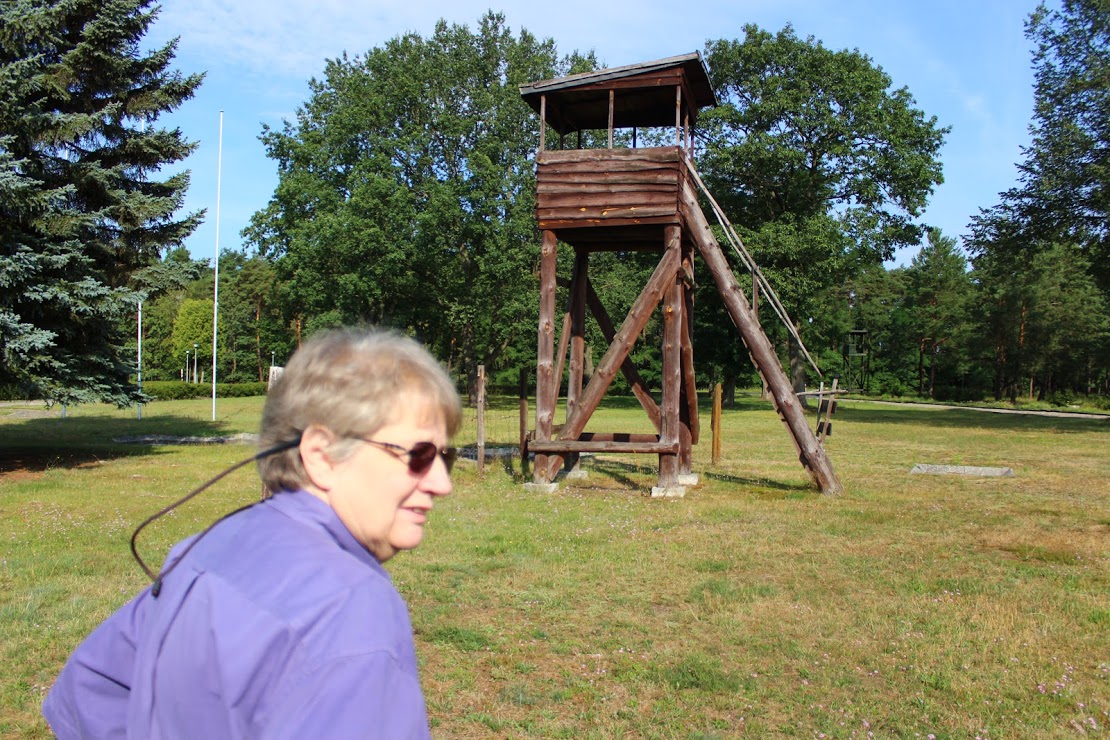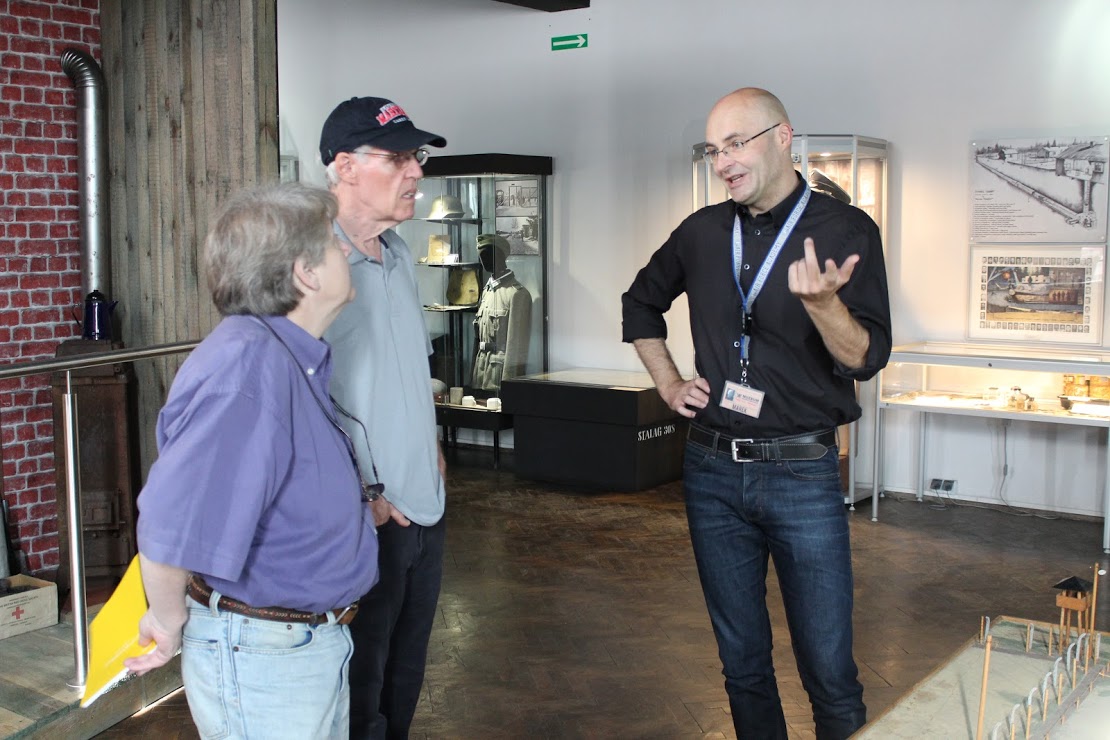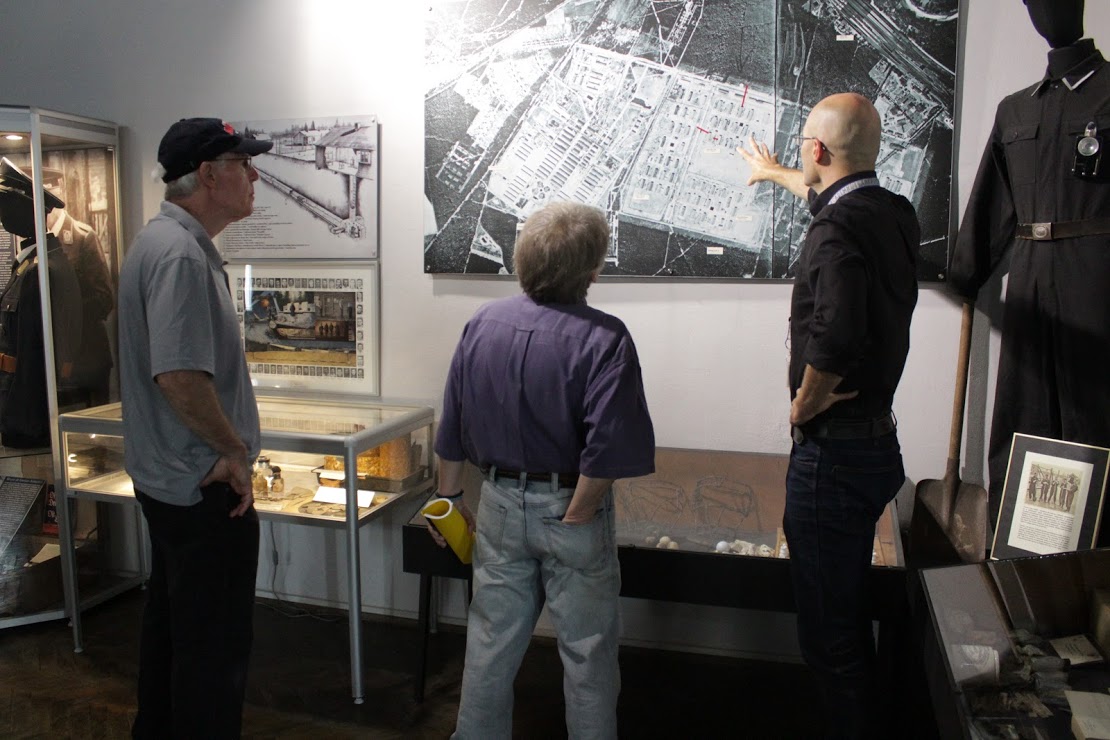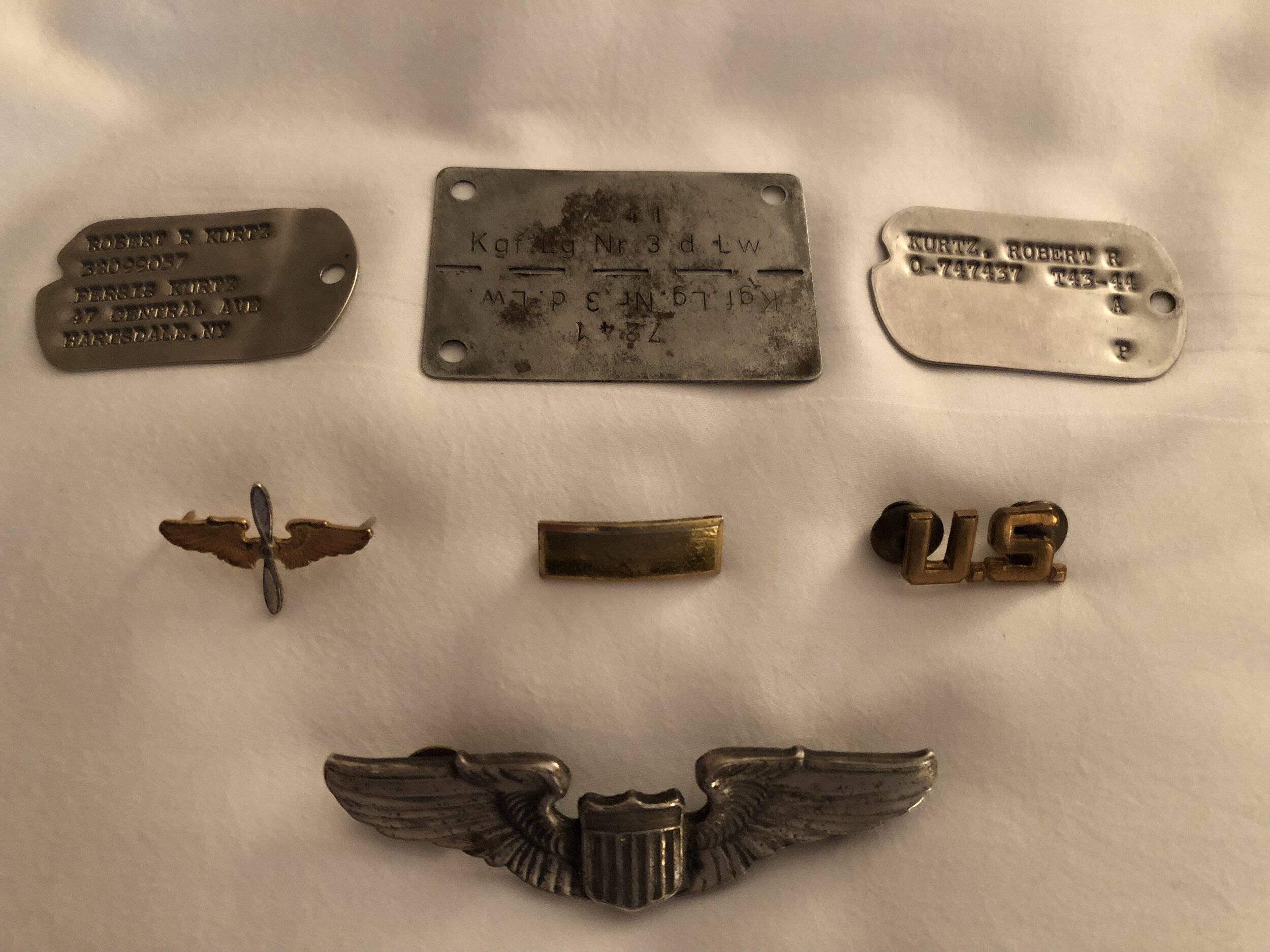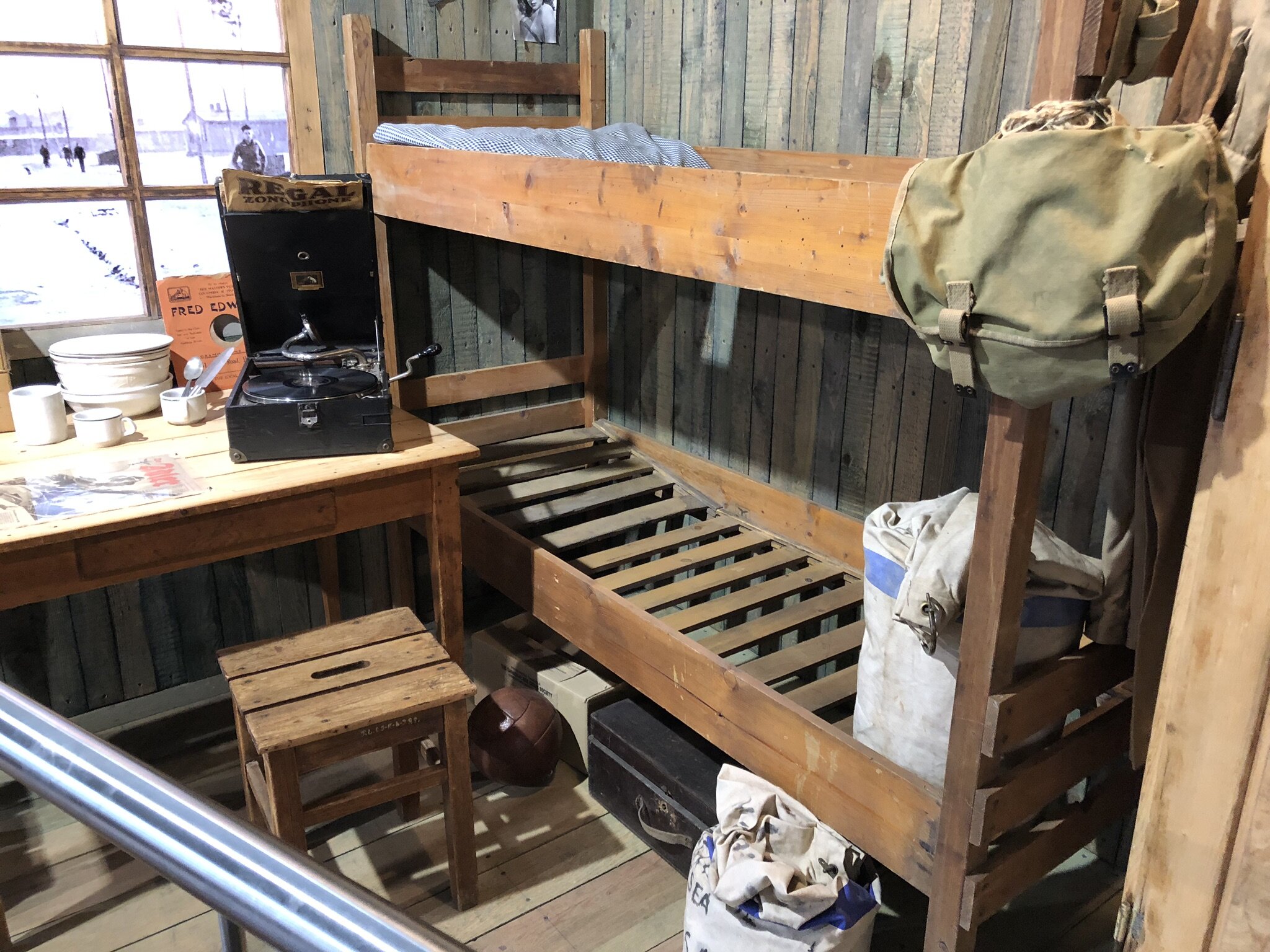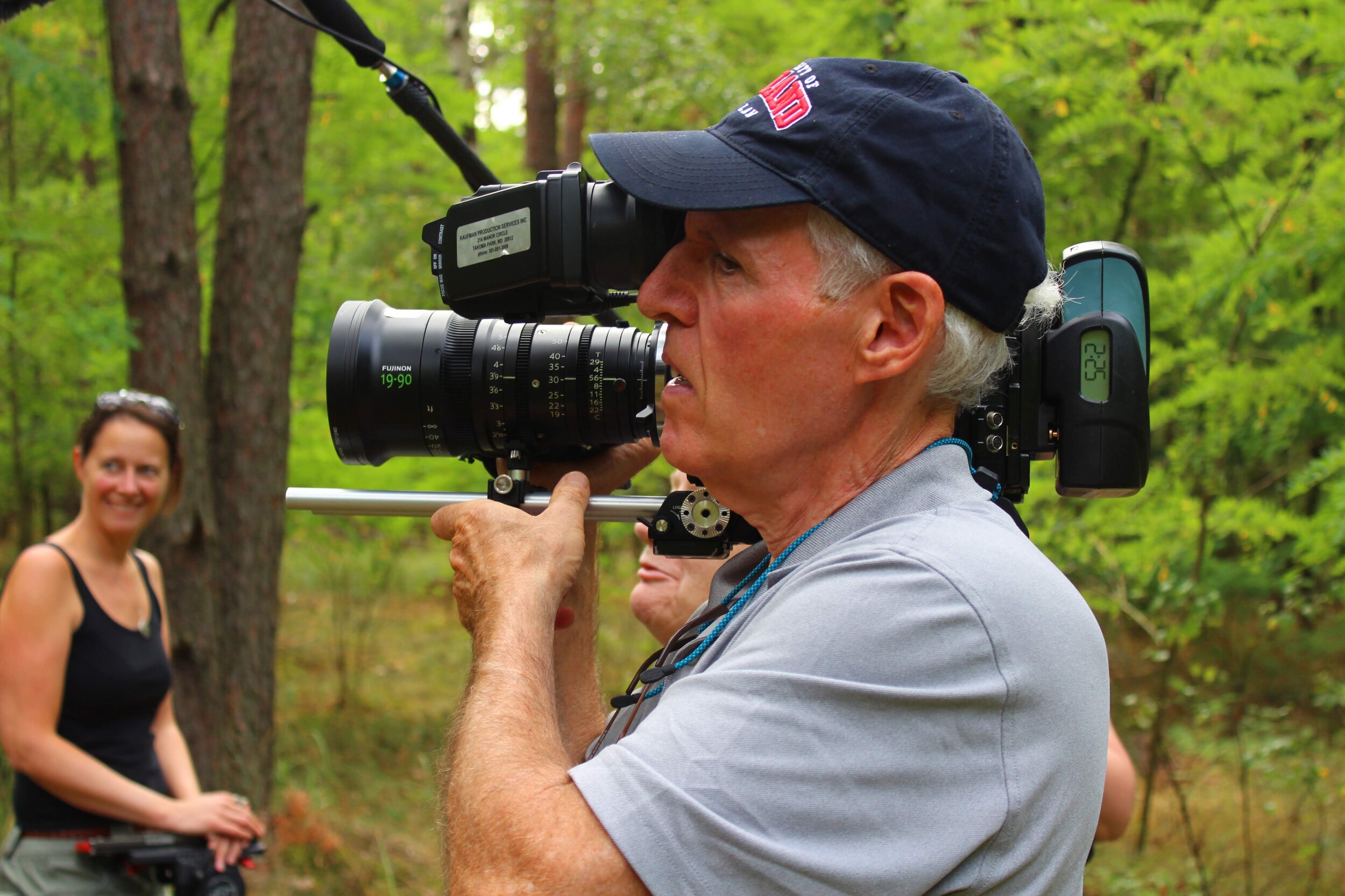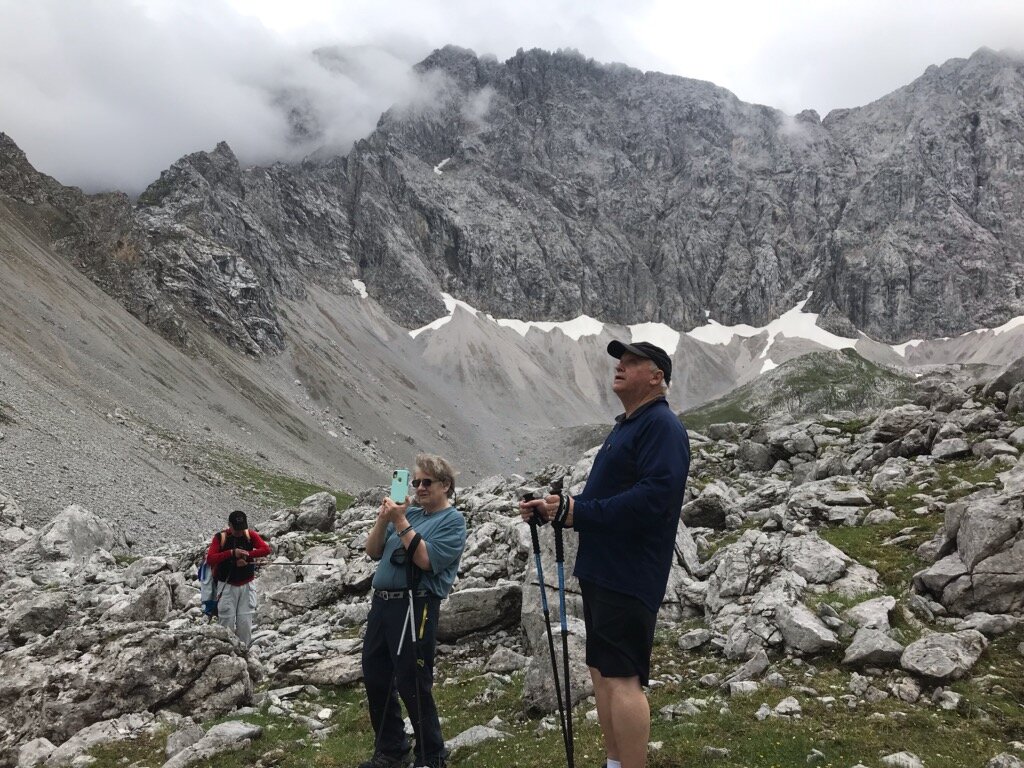From the field notes
From the Director’s Desk
by Vicki Hughes
We’ve been back from the shoot now for a couple of months. This has given me time to reflect on events in August and get a clearer picture on how the film will evolve.
First of all, it was an incredible privilege, and loads of fun to be with Jim Kurtz as he returned to Austria for the 75th anniversary of the air battle over Ehrwald, Austria. To be up at the crash site, with Jim, Debbie Beson, their families and the tireless, wise, and brilliant Gerd Leitner, moved the whole crew. Yes it was a tough climb in the alps, but to say it was worth it, is an understatement. It was breathtakingly beautiful both physically and emotionally.
The interviews we did provided us with new stories and insights, as we heard about the day of the crash from Gerd, whose vivid memories as an eight-year-old boy, provided us with a first hand account of the event. It was terrifying for all concerned, and those few brief minutes over that small and picturesque village in Austria on August 3, 1944, changed so many lives forever. The ripples from that event affected the past, but resonate down the decades, and impact the lives of so many people, many of whom weren’t born until much later.
The day after we wrapped in Austria, the crew drove to Zagan, Poland, the site of Stalag Luft III, perhaps the most famous of the WWII prisoner of war camps. We weren’t there to reflect on the events, now known as The Great Escape, though of course we did remember the escapees courage, and the criminal murder of 50 of those recaptured. Our mission was to be with Jim on the last leg of his pilgrimage to be in the places where his father had been. Robert Kurtz was held prisoner here after his capture in Ehrwald, and we came to record Jim and his son Mike as they followed in their father and grandfather’s footsteps. Led by Marek Lazarz, the camp/museum’s curator, we toured the site and learned details that are not part of any movie. We were alone at the museum that day, and Marek was an incomparable guide, deeply knowledgeable and a gifted storyteller. We learned the day-to-day details of the life of a classic kriegie (allied POW), but particularly what Robert’s life must have been like – he arrived only a few weeks after the escape. Most importantly, Marek was able to take Jim and Mike to the location of the actual hut where their father/grandfather resided. Jim and his son where able to stand where he had eaten, written, slept, and dreamed of home. And the place from which he would set out on one of the most desperate forced marches in modern history.
While the focus in this part of the trip was on Jim’s on-going pilgrimage to know his father, it gave all of us involved in the project a deeper sense of how impactful that fatal day in August, 1944 was on so many lives. It also revealed new elements about this web of interconnected stories. We did not know that Stalag Luft III was prison to 12 Tuskegee Airmen, shot down during the war – they also suffered incarceration, and the grueling 600-mile march in the winter snows of January 1945. From Debbie Beson, we learned more about the impacts of war on her father, Tony Jezowski, and got a better understanding of why so many of the participants didn’t want to talk about their experiences. We learned also that enemies are not always enemies by choice. Gerd Leitner’s memories not only of the air battle, but also of those of life in Nazi occupied Ehrwald, brought home the depth of pain and sorrow when communities go to war.
The air battle over Austria lasted only 30 seconds. It exploded into the lives of the soldiers involved, and into those of their children and grandchildren. It exploded into the lives of the people over whose homes the battle was fought. And that explosion continues to reverberate. It is revealing to us the problems facing veterans, not only from WWII, but those today. It has blown open a window on racial injustices, family trauma, forgiveness, bridge building and the importance of remembering as much of the past as possible. Through Robert Kurtz’s story, we are able to dig into realities of a war from decades ago and to remind us of what we must not do again. This is the story we are telling.
Funding permitting, our next major shoot will be here in Ipswich, filming the re-enactment of the winter march from Stalag Luft III to Moosburg, Germany. Stay tuned!
JIM KURTZ’S EMOTIONAL RETURN TO EUROPE by Jim Kurtz
In the initial planning of my third and final return to Europe in early August this year, my desire to fill in the remaining pieces of the puzzle that made up the man, my father, 2nd. Lt Robert Kurtz, was paramount. Equally important was the unique opportunity to spend five days with my son, Mike, who had accompanied me in 2001 on our first trip back to Ehrwald, Austria. Never would I have imagined that those two scenarios would blend together to create memories that will stay with me forever.
On August 3, 2019, we climbed to the Brendlkar, the crash site of my father’s B-24 bomber, Sugar Baby, which had plunged into the mountainside after being shot down high over the Austrian Alps. Our ascent began in horrible weather, rainy and cold. It took longer than we had anticipated, but as we hiked over the last ridge and peered at the wreckage of Sugar Baby, the clouds parted and the sun shone brightly. Surely a sign of some kind. But then, for whatever reason, I looked down at my watch. It was 11:55 am, exactly to the minute that 75 years before, my dad’s bomber had crashed into the Brendlkar.
Those of you who have read my book or talked to me know that I have felt my father’s presence many times. When the sun miraculously appeared, I felt him. On our descent back down, we stopped at an inn for a rest and our guide told us that is where my father was first taken by German soldiers who had captured him. I felt his presence once more.
Two days later we traveled to Zagan, Poland, the site of Stalag Luft III, where my father was a POW for close to six months. The curator of the museum there, Marek Lazarz, led me and Mike into the pineland forest that surrounded my father’s camp, and after a short walk, told me to stop in my tracks. He told me I was standing on the foundation of Hut 122 in the North Compound of Stalag Luft III. My legs began to tremble and I felt a chill run up and down my spine. I already knew what his next words to me would be. “This was the foundation of your father’s hut.” My father’s presence, once again, to be sure, and the perfect ending for a perfect trip.
For image slideshow, click the photo to the left!
Vicki Hughes photographs the crash site as Jim Kurtz reflects
Vicki Hughes walks the grounds of Stalag Luft III
Jim Kurtz (blue shirt) looks at the alps as Gerd Leitner (red shirt) begins climb down.
Jim Kurtz at guard tower (restored) at Stalag Luft III
Gerd Leitner, Debbie Beson and Jim Kurtz look at the Alps
August 5, 2019
And that’s a wrap! Last day of the Europe production has come to a close. We had a blast filming in and around Stalag Luft III and all learned more about the history of the former P.O.W. camp than we expected. We would like to thank Marek Lazarz for letting us come by to film and answering the hundreds of questions we had. We would also like to thank Gerd and Brad for helping us in Ehrwald. And last, but certainly not least, we would like to thank anyone who has donated to the production. We wouldn’t have had this opportunity if it weren’t for you. Thank you.
August 3, 2019
We made the hike up to the crash-site! The view looking over Ehrwald and the other mountains was breath-taking. And seeing the wreckage of Sugar Baby, the B-24 Liberator Robert Kurtz co-piloted was sobering. After filming for a couple of hours and getting a visit from a herd of lambs, we made our way down to prepare for an interview with Debbie Beson, whose father was on the plane with Robert Kurtz. Tomorrow we drive to Żagań, Poland to visit Stalag Luft III on August 5, 2019.
August 2, 2019
Day 2 of production comes to a close! Today we shot B-Roll of Jim Kurtz wandering the village and an interview with a witness to the air battle Robert Kurtz’s plane was shot down in and the mayor of Ehrwald. We want to thank Gerd Leitner and Martin Hohenegg for taking time of out their day to help us on this journey and we hope that you will stick with us for the ride. We would also like to send our sincerest condolences to the family of Hilde Richter. She was an amazing woman who brought smiles everywhere she went. Tomorrow we hike to the site of Robert Kurtz’s plane crash and conduct more interviews.
August 1, 2019
We have finally arrived in Ehrwald, Austria and production of The Green Box has officially begun! We spent the day mostly visiting shoot locations to get an understanding of what they would look like on camera and to prepare for the actual shoot; we also got to meet some of the subjects in person for the very first time. Tomorrow we begin the interviews and Saturday we hike the mountain where Bob Kurtz’s plane, “Sugar Baby” crashed.
July 27, 2019
HERE WE GO! Within the week, our team will be heading out to Ehrwald, Austria and Żagań, Poland and it is all because of your support. We wouldn’t be making this without you. We will be updating this page daily while overseas to keep you in the loop! So from the whole The Green Box team: Thank you so very much!
